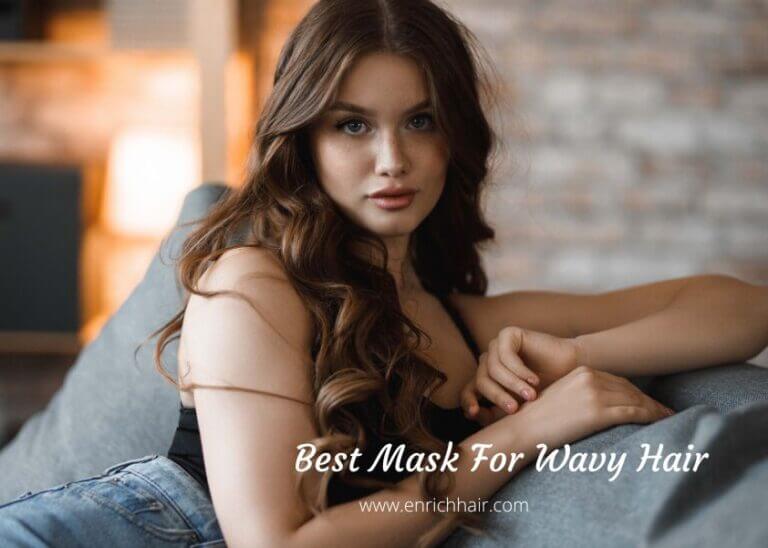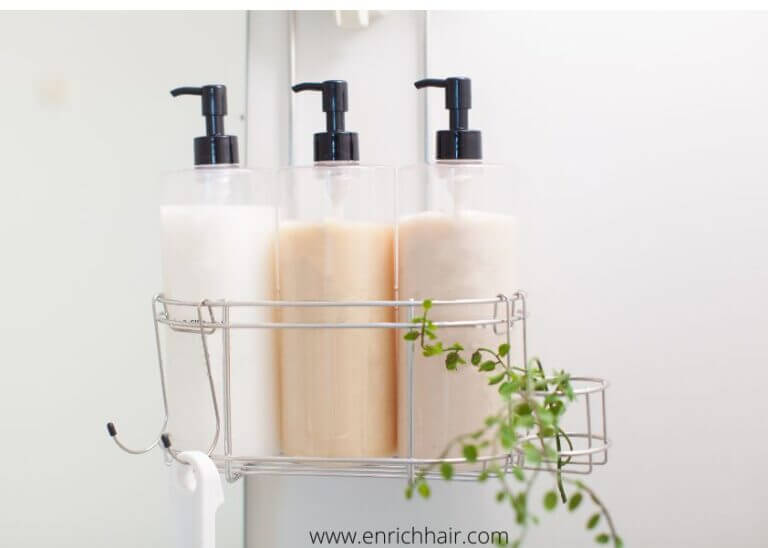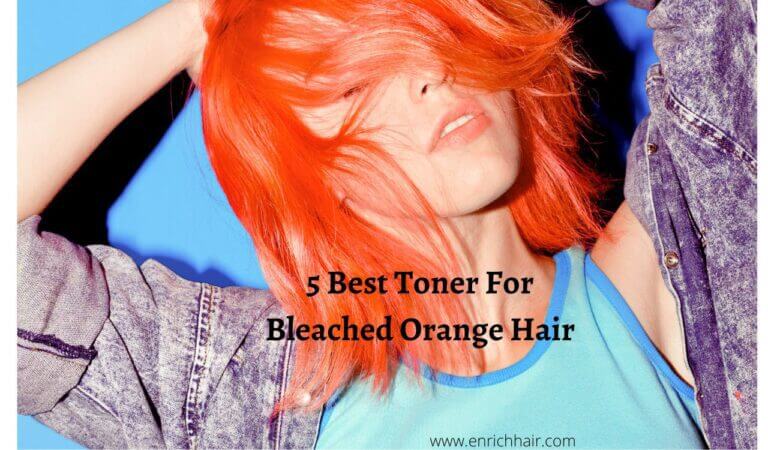Safest At Home Hair Dye With Best Results
Table of Contents
Have you noticed the sudden surge in DIY hair dyes? While it’s great to satisfy creative impulses, at-home dye can present safety risks. From burning scalps to stained skin and clothing, choosing a safer option when coloring your hair is key. In this blog post, we’ll take a comprehensive look into at-home hair dyeing—unraveling best practices for avoiding mishaps so that you can show off your colors with confidence!
Different Types of Hair Dye And Their Associated Risks
If you’re thinking about the safest at home hair dye, it’s important to learn a bit about the different types of hair dye and their associated risks.
-
Semi-permanent hair Dye and Associated Risks
Semi-permanent hair dye is a type of dye that lasts for about 6 to 12 shampoos. It does not contain ammonia or peroxide, which means it will not penetrate the hair shaft like permanent color does. This type of dye only coats the outside of the strands, adding color without damaging your hair. The risks associated with this type of hair dye include eye and skin irritation, allergic reactions from certain ingredients, and scalp dryness due to the product build-up.
-
Demi-Permanent Hair Dye and Associated Risks
Demi-permanent hair dye is similar to semi-permanent in that it uses no ammonia or peroxide. However, it does contain low concentrations of these ingredients which help to penetrate deeper into the cuticles than semi-permanent dyes do. This type of color lasts between 12 and 24 shampoos. The risks associated with demi-permanent dyes are somewhat similar to those experienced when using semi-permanent dyes but can be worse if left on too long or used improperly.
Potential risks include allergic reactions, itching or burning sensations on the scalp, staining on the skin or clothing after application, as well as breakage due to increased dryness and damage to the cuticle layer.
-
Permanent Hair Dye and Associated Risks
Permanent hair coloring is by far the most popular choice when it comes to dying your hair at home or in a salon because it offers maximum coverage with minimal damage if done correctly. Permanent color contains both ammonia and peroxide which helps to open up the cuticle layer so that pigment molecules can penetrate deep within each strand giving you more vibrant results that last much longer than other types of coloring – typically 4–6 weeks before needing a touchup.
The associated risks with permanent color are generally more severe than those seen with semi or demi-permanent dyes including severe itching or burning sensations on the scalp, staining on skin after application due to high concentrations of chemicals, increased dryness and breakage caused by those same harsh chemicals, as well as allergic reactions from certain ingredients used in specific brands of products.
How To Dye Your Hair At Home Safely
Although salon visits can often be expensive, it is possible to dye your hair safely and effectively at home. When done correctly, you can achieve beautiful results without the hassle of a costly appointment.
-
Choose the Right Hair Color:
Selecting the right hair color for your desired results is essential. Consult the shade descriptions on the product packaging or talk to an expert colorist online before purchasing your dye. Consider factors like skin tone, eye color, and current hair color to determine what will work best for you.
-
Gather Necessary Supplies:
Make sure you have all the necessary items before starting. This includes a set of gloves, a cape, clips or elastics (to hold back sections of hair), a comb or brush for sectioning, and of course, your chosen box dye kit.
-
Perform a Skin Test:
Before applying any chemical dye to your scalp or skin, conduct a patch test 48 hours in advance according to package instructions. This is important for determining if any allergies exist that could irritate.
-
Prepare Your Hair:
Wash your hair with shampoo beforehand and make sure it’s clean and dry before beginning application. If possible, leave out any conditioner as this can affect how well the dye takes hold in your hair strands.
-
Mix and Apply the Color:
Follow the directions on the package carefully when mixing your chosen dye formula; some require multiple components while others only call for one bottle of colorant. After mixing per package instructions, apply with a tint brush or comb onto sections of dampened (not soaking wet) hair from root to tip until all strands are saturated with product.
-
Rinse & Condition:
Leave the product on longer than normal if desired (up to 30 minutes), then rinse thoroughly with cold water until the water runs clear off your head. Finish by shampooing and conditioning with products designed specifically for dyed tresses—this will help preserve vibrancy in between salon visits!
-
Caring for Dyed Hair at Home:
It’s important to care for colored hair properly after coloring it at home to maintain its hue and luster over time – use sulfate-free shampoos/conditioners that are created specifically for colored/dyed hair; avoid using heated styling tools too frequently; explore deep-conditioning treatments; wear hats/scarves outdoors when in direct sunlight; commit to regular trims every six weeks; and book professional touch-ups at least every four months if needed!
The Best Ways To Protect Your Skin And Scalp From Damage
Here are some tips that help to protect your skin and scalp from damage while dyeing your hair at home.
-
Wear Protective Clothing:
Wearing protective clothing is one of the most effective ways to protect your skin and scalp from damage. Protective clothing can help shield you from UV radiation, wind, dust, and other environmental factors that can cause harm. Look for items made with a tightly woven fabric like cotton or nylon, and try to wear darker colors which absorb more light than lighter colors do. When outdoors, wear a wide-brimmed hat to further protect your scalp and face from the sun’s rays.
-
Use Sunscreen:
Sunscreen is an invaluable tool when it comes to protecting your skin and scalp from damage caused by UV radiation. Make sure to look for sunscreen products that are labeled ‘broad spectrum’ so that they protect against both UVA and UVB rays. Apply sunscreen generously before going outdoors and don’t forget to reapply throughout the day if you stay out in the sun for extended periods.
-
Avoid Hot Water:
Hot showers can dry out the natural oils in your skin and scalp leading to irritation or damage. Try using warm water instead or take shorter showers so as not to expose yourself to too much heat for too long of a period.
-
Cleanse Gently:
When cleansing your skin or scalp, use gentle non-abrasive cleaning products such as soap-free cleansers or sulfate-free shampoos that are specifically formulated for sensitive areas of your body such as your face or head region. Additionally, avoid scrubbing too hard when washing as this can lead to irritation or inflammation over time.
-
Keep Skin Hydrated:
Moisturizing regularly is key to keeping your skin hydrated while also protecting it from damage caused by external elements such as cold wind or hot air conditioning systems indoors. Look for moisturizers that are free of fragrances or harsh chemicals that could irritate delicate areas and try using natural oil-based products such as coconut oil on areas like elbows or knees where extra hydration is needed during colder months of the year!
-
Maintain Healthy Diet Habits:
Eating healthy is essential to keep our bodies strong and functioning properly; this includes keeping our skin and scalps healthy! Eating lots of fruits, vegetables, nuts, seeds, whole grains, and other nutrient-rich foods will ensure that our bodies receive all the necessary vitamins and minerals needed to keep things looking great! Additionally staying away from sugary drinks or processed snacks will also minimize any potential breakouts due to nasty ingredients found within them!
Ingredients to Avoid in Hair Dye
If you are going to try the safest at home hair dye, learn about all the ingredients you have to avoid.
-
Ammonia:
Ammonia is a common ingredient in many hair dyes and can be incredibly harmful to your scalp and hair. It opens up the cuticle of the hair and helps the color penetrate deeper, but this also strips away natural oils and moisture from the strands. It is an irritant for people with sensitive scalps and can cause redness, itching, burning sensations, and other signs of irritation.
-
Resorcinol:
Resorcinol is another ingredient commonly found in hair dyes. It’s used to lighten dark colors, but it has been known to cause allergic reactions such as rashes, hives, burning sensations, swelling, and more. If you’re prone to allergies or have very sensitive skin, you should avoid resorcinol-containing dyes at all costs.
-
Paraphenylenediamine (PPD):
PPD is a chemical found in permanent hair dyes that assists with color performance by helping it stick to the strands longer. However, it’s also one of the most common causes of allergic reactions from hair dyeing products. Symptoms include itching, swelling, redness and blistering – which can become severe if not treated immediately.
-
Peroxide
: Peroxide is often included in bleaching products for its ability to lighten dark colors quickly – however bleaching agents are harsh on your hair and can leave it dry and brittle over time. Furthermore, peroxide has been linked to scalp irritation and other allergic reactions if used too often or left on for too long.
-
Sodium Laureth Sulfate (SLES):
SLES is typically added to shampoos or cleansers because it’s an effective foaming agent – however its presence in hair dye formulations means it could strip away essential oils and moisture from your strands – leaving them dryer than ever before! In addition, SLES may be contaminated with 1 4-dioxane which is a suspected carcinogen according to some studies – meaning it may be best avoided altogether!
A List Of Natural And Safest At-Home Hair Dyes
Here is a list of some natural and safest at home hair dyes.
- Get permanent, vibrant, multi dimensional color coverage with Discovery Naturals' Red Henna Hair Color for All hair coloring kit. Featuring Wine Dark Red, mix any of our fade resistant 12 shades of premium henna hair dye powder to find your best look. Henna cannot lighten hair, so choose shades darker than your natural hair color for best results
- Nature's Way to Cover Gray Blend the grey in your hair & beard or go bold with a new style. Great for touch up, our triple-sifted no drip formula produces a fine, smooth paste that is easy to apply root to tip
- Full of natural plant dyes, our anti fade color coats the shaft, protecting while keeping the red color vibrant. The moisture rich blend of herbs and botanical extracts conditions- giving your hair shine & long lasting 4 to 8 weeks of color
- Includes everything needed for convenient, hassle free at home coloring or tinting. Simply mix, apply, and rinse using the included 100g powder, gloves, cap, & instructions for professional, salon quality results
- Vegan, organic, & chemical free- our pure henna natural herbs blend was made for sensitive skin. Chemical, preservative, & cruelty-free, it does not contain any pesticides, BPA, ammonia, peroxide, metallic salts or PPD
Henna is a semi-permanent, and safest at-home hair dye that is derived from a plant native to tropical and subtropical regions of Africa, Asia, and Australia. It coats the outside of each hair strand with color, leaving you with subtle results that can last up to six weeks. This natural dye has no peroxide or ammonia and is available in several shades including brown, black, red, and blonde.
Manjistha is made from the leaves of Rubia Cordifolia and is an herbal powder used as a natural hair dye for centuries in India. The powder can be mixed with water or oil to create a paste which can then be applied to the hair for long-lasting coverage. It also helps reduce scalp problems such as dandruff and itching as well as strengthening hair roots and promoting hair growth. It is considered as safest at-home hair dye.
- Size: 3.53 Ounce (Pack of 1)
- Kama Ayurveda Organic Indigo Powder, 100g
Indigo powder is another natural and safest at-home hair dye that comes from a variety of plants belonging to the Leguminosae family. The powder works best when mixed with henna for brunettes or blondes who want to achieve reddish-brown highlights and lowlights on their hair without using harsh chemicals.
- UPGRADE YOUR COFFEE - Organic coffee packed with essential brain vitamins! World's Most Productive Coffee! Get STUFF done!
- ALL NATURAL INGREDIENTS - Organic High Altitude coffee beans formulated with with cognitive-enhancing brain vitamins L-theanine
- TACKLE ALL TASKS - Whether you're crushing the latest spreadsheet, conquering mountaintops, or rounding up the kids for soccer practice. Enhance endurance and stay focus longer
- FLAVOR - Good sweetness and balance, mild chocolate, faint apricot, fir, walnut, a hint of faded lily
- AROMA - Sweet, balanced, straightforward. Notes of cedar, chocolate, hazelnut, faint flowers
For those looking for an all-natural way to darken their locks, coffee is a great option! Simply mix brewed coffee into your favorite conditioner and apply it directly onto your damp hair before rinsing it out thoroughly afterward. This concoction can help enhance your existing color while adding more dimension to your mane!
- Nothing Beats Beets: Supercharge your diet with the power of beets. Beet root powder packs all the impressive benefits of beets into an easy to use powder. Just add it to your favorite beverage for a low-calorie infusion of vitamins, minerals, and fiber.
- Natural Goodness: Beets are rich in betalains. Couple that with all of the nutritional benefits of beets and you have a powerhouse of goodness. Incorporate beet root powder into your daily diet to maximize your health.
- Get It All: Not loving the idea of eating a plate full of beets? We get that. That's why we've put all the goodness of beets into this easy to use powder. Get all of their great benefits in a tasty, easy to use format.
- A Hidden Gem: Our organic beet root powder is designed to be added almost anywhere. Put it in your morning smoothie. Add it to water, juice, or any other beverage. Mix it into soups, salad dressing, dips, or hummus. Your only limit is your imagination.
- High Quality, Great Results: We take the quality of our products seriously. That's why we're proud to say the beets in our beet root powder are certified organic and non-GMO. See the difference high quality beet root powder can make!
Another popular natural dye option is beetroot powder which helps give your tresses a beautiful reddish hue if left on overnight! Just mix 3 tablespoons of beetroot powder into 1/4 cup of conditioner until it’s evenly distributed before applying it on damp strands for amazing results!
The Benefits Of Using the Safest At Home Hair Dye
Following are some benefits of using the safest at home hair dye.
-
Health Benefits
One of the most important benefits of using safe hair dyes is that it helps to promote healthier hair. This can be achieved by choosing a dye that does not contain any harsh chemicals or irritants that could damage your hair. Safe hair dye products are formulated with natural ingredients such as plant extracts, fruit and vegetable oils, aloe vera, and other nourishing ingredients that help to protect your scalp and strands from damage. These products also tend to be more gentle on sensitive scalps and color-treated hair, reducing the risk of irritation or an allergic reaction.
-
Limit Damage
Harsh chemical-based dyes can strip away layers of cuticle on the surface of your hair which serves as a protective barrier against environmental damage. This leaves your hair more vulnerable to breakage, split ends, and dryness. When you use a safe dye product, you limit the amount of damage done to your strands since these products don’t contain any harsh chemicals that strip away the cuticles from your strands.
-
Longer Lasting Colors
Chemical-based dyes can often fade quickly and require more frequent touch-ups to maintain a vibrant-looking color. On the other hand, safe hair dyes leave lasting color results which can last up to several weeks if properly cared for and maintained with salon-quality treatments such as deep conditioning masks. As well as this, these types of dyes contain natural antioxidants which help fight off free radical damage caused by sun exposure, making them more resistant to fading over time.
-
Environmental Considerations
Using natural-based dye products is an environmentally friendly choice compared to chemical-based dyes since they do not produce any toxic waste materials when used. At least 95% of all synthetic chemicals contained in traditional haircare products are petroleum derivatives which have been shown to have negative effects on our planet’s ecosystems once released into waterways or soil beds. By choosing a safe dye product, you’re helping reduce this pollution and contribute towards maintaining a healthier environment for future generations!











